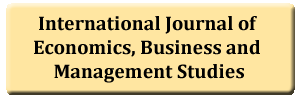Hunger and Malnutrition: Review of Copenhagen Consensus Challenge Paper 2004
DOI:
https://doi.org/10.20448/journal.801/2016.1.2/801.2.85.99Keywords:
Copenhagen consensus, Malnutrition and hunger, Cross section analysis, Opponents’ perspectives.Abstract
This paper reviewed Copenhagen challenge paper on hunger and malnutrition in 2004 alongside opponents’ perspectives. The original challenge paper identified direct cost of malnutrition on health such as low birth weight and macronutrients deficiencies among children between ages 0-5 year. Indirect cost on economy such as low productivity due to poor cognitive development among children and absence of adult workers from work due to illness from poor nutrition were also identified. However, the original challenge paper significantly failed to address factors that could have led to the prevalence of malnutrition and hunger while proffering solution to these challenges. Hence, this paper empirically examine the relationship between undernutrition and these factors which include level of economic development, household income, access to improved water and level of calories intake. A cross section dataset of 52 developing countries for the year 2011 were analysed, the correlation matrix table and scattered graph plot results show that there are fairly strong negative correlation between malnutrition proxy by prevalence of undernutrition and (i) household income (poverty) proxy by GNI per capita; (ii) economic development proxy by GDP per capita and (iii) Access to improved water. However, the correlation between undernutrition and depth of calories deficit proved very strong and was positive. Thus, more attention need to be given to macroeconomic policies that will improve the life of the people in the economy and alleviate poverty. Basic amenities such improved and portable water should also be provided for the populace especially in developing countries where incidence of malnutrition are prevalence.




